Opened in 2008 with a load of media coverage, I think is fair to say this D Kidd design has not been universally praised. To some degree, this was always bound to be the case because it is natural to draw comparisons with the Old Course, or indeed all Links Trust courses...and tell me, how many courses compare favourably with the Old Course? Well, The Castle is a bold statement by Kidd!
The opener is sensibly a short two shotter bending right. There are two aiming bunkers off to the left. The green is fairly shallow and quite wide. Looking back at the tee.
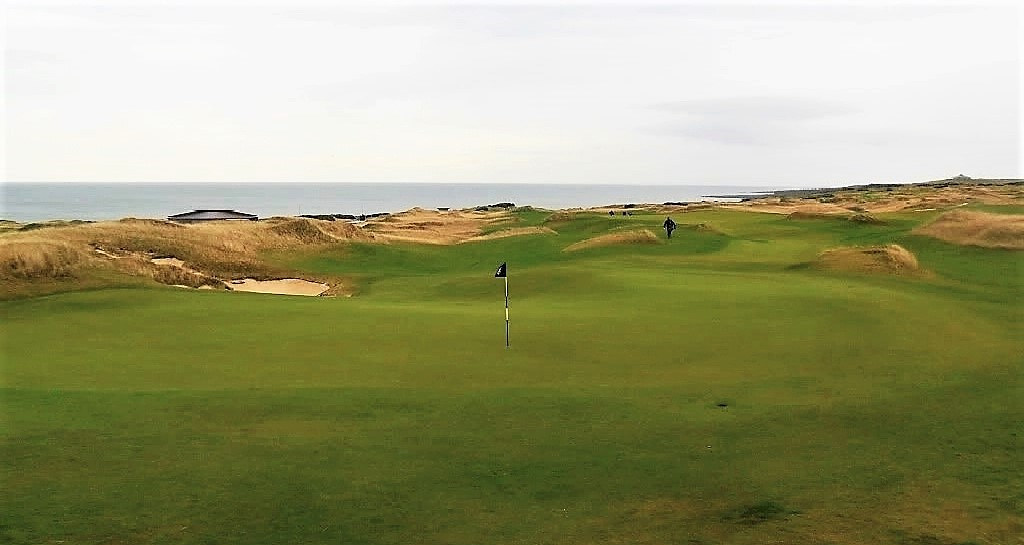
#2 legs right as well and played quite short with the wind quartering from the left. Once again, aiming bunkers down the left are provided. This is the first of the many plateau greens. The short third features a side by side two tier green with a sharp fallaway to the rear. Accessing the flag seen in the photo took a very special shot. Walking away I questioned the severity of the green.
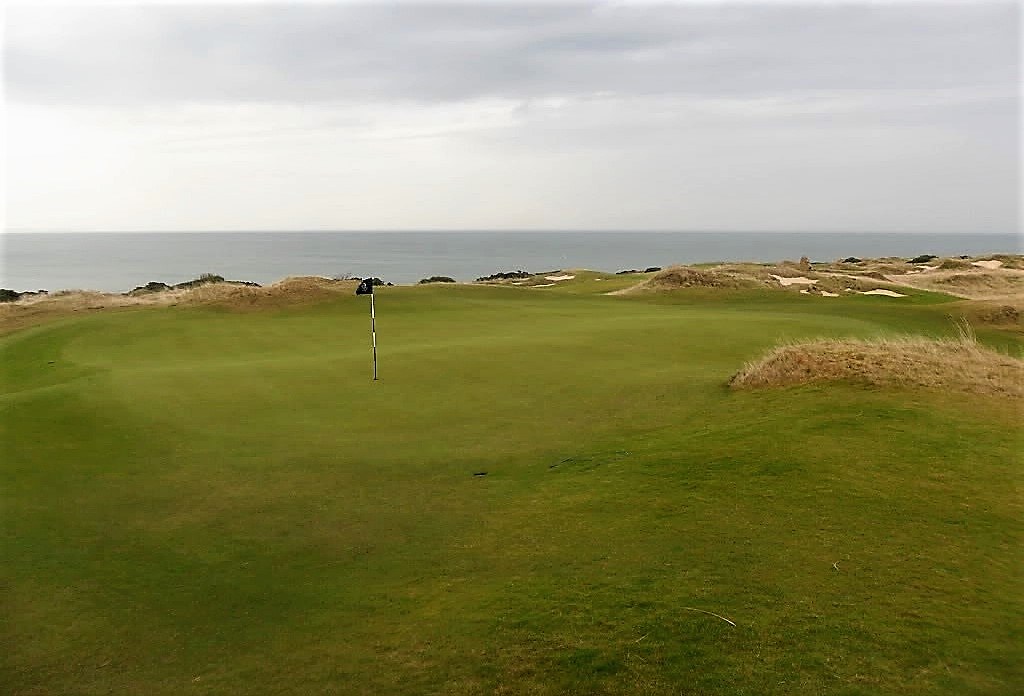
#s 4 & 5 are back to back three-shotters with the fifth more or less turning back on the fourth. #4 features a third consecutive plateau green with an interesting twist of a burn in play. The green is absolutely huge! Approaching from left of the photo, the hole is located on the extreme front of the cloverleaf green.
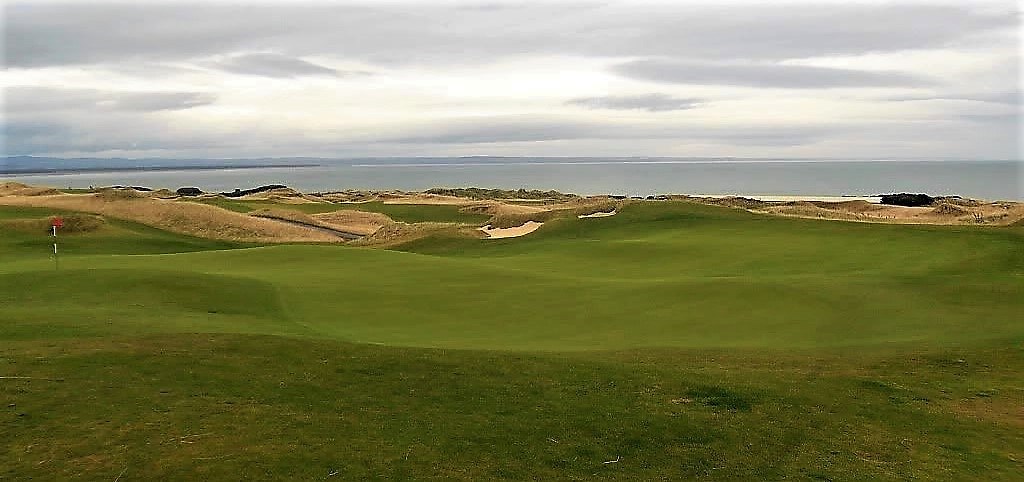
#5 is a much harder hole playing uphill to a blind punchbowl green with mounds dotted through it. The second shot is particularly challenging. Behind the green.
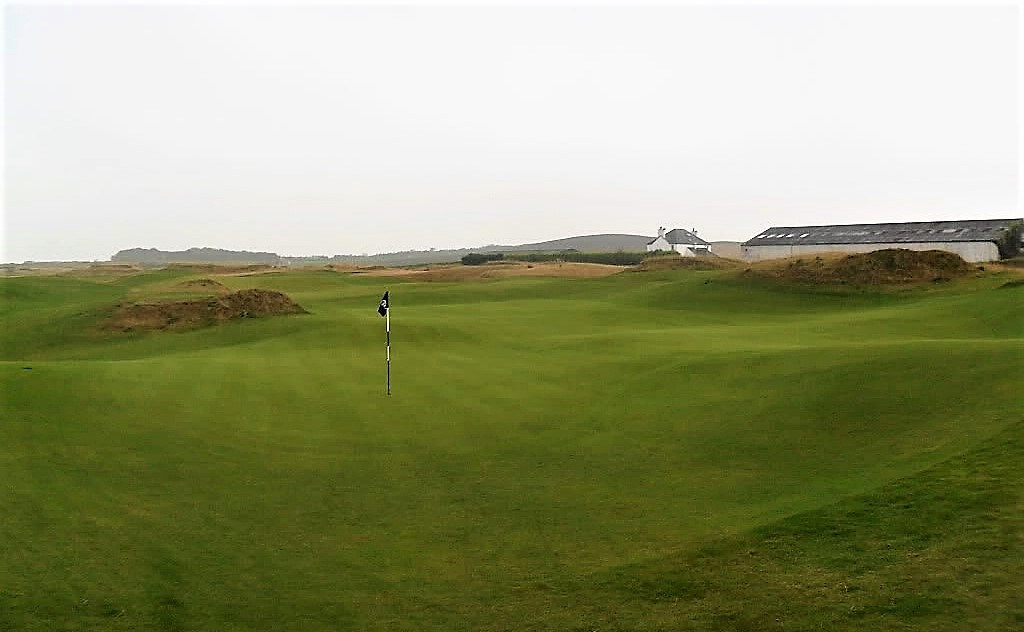
The up n' oer' sixth starts the run back to the house along the cliff edge - another plateau green is on tap.
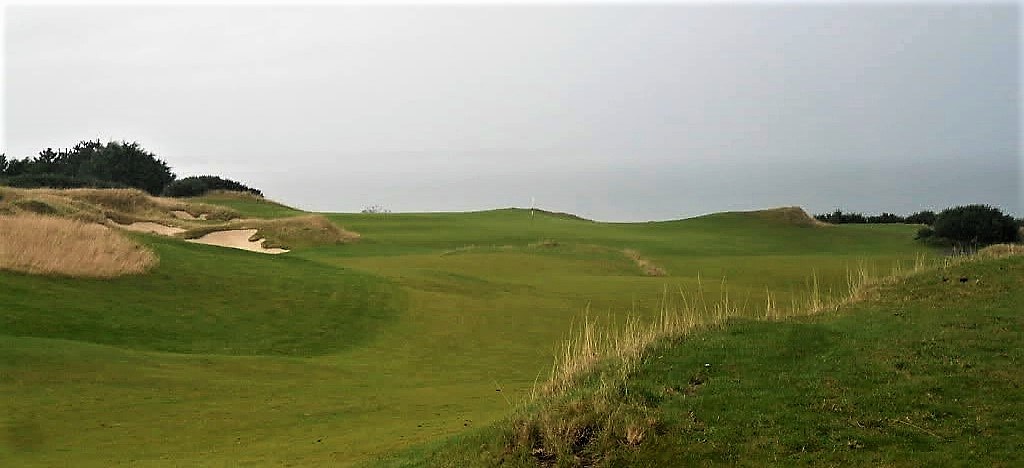
The 7th is a tough par 4 with a tight drive. Below is the approach after a very good drive.
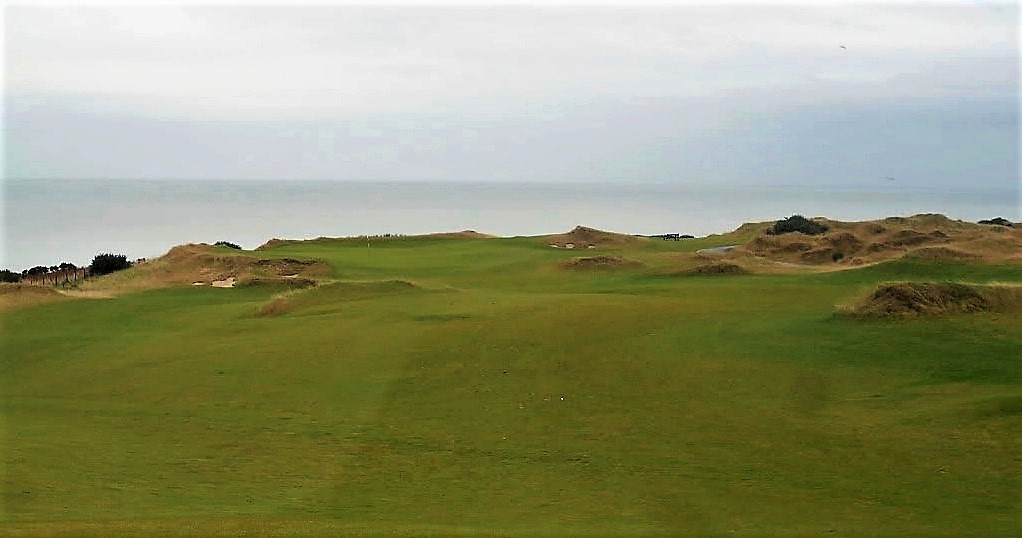
Staying on the coast, the short 8th is a devil of a hole. The green is set at an angle with a large depression needing to be carried to access its rear right section. #9 hugs the coast, but one can have a go directly at the double green shared with the 18th.
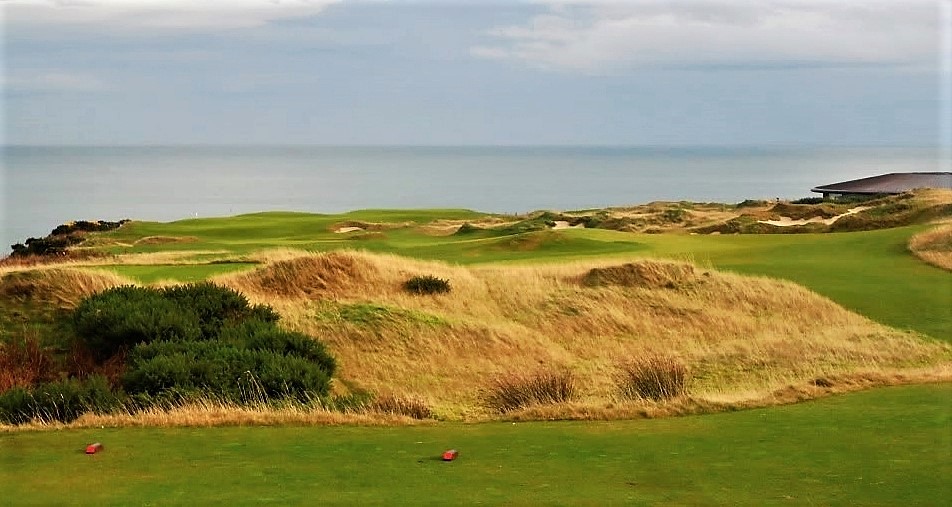
The approach after a lay-up.
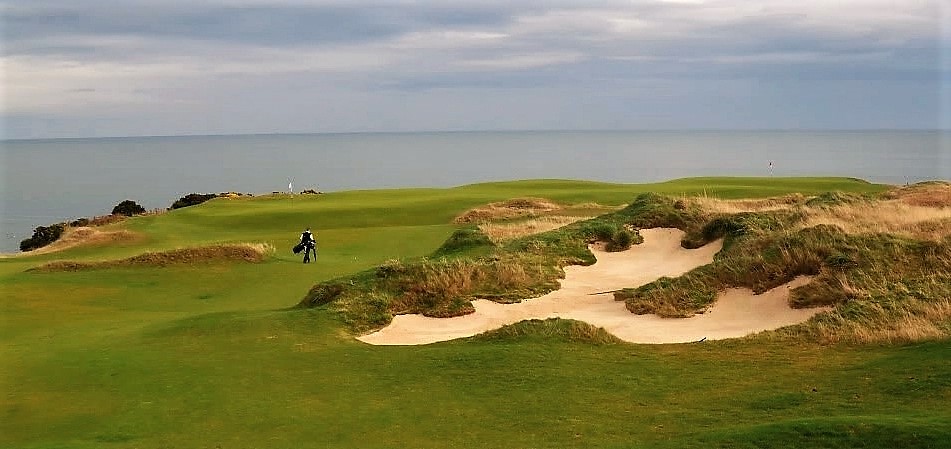
The back nine starts with a terrific par 3, perhaps the best hole so far. It plays deceptively uphill; the flag is on the front part of the green in a swale. To the left and not that far off, is a creek which will drink many a pulled tee shot.
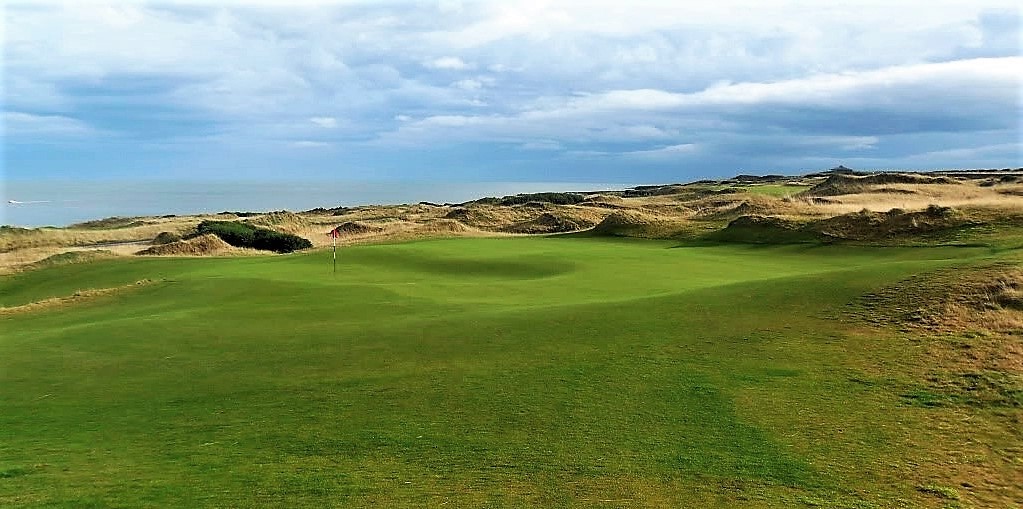
The eleventh plays uphill and splits sentinel mounds on either side of the fairway. It was by this time that I was thoroughly frustrated with the greens. Not only were many quite severe, but I think to combat the slopes the green speeds varied immensely. On the 11th two balls hung up half way down the slope to the hole. The twelfth, notwithstanding the turf, felt very linksy to me. An extreme legger to the left with a tight driving zone. This is the easy part! The green is table top jobbie (to the far left in the first photo - left of the golfers). What makes this hole work better than most of the other severe greensites is there is space to miss to the rear of the green.
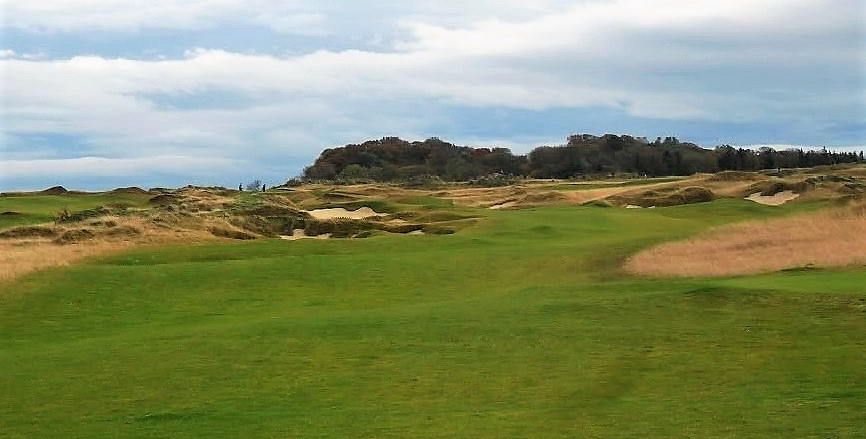
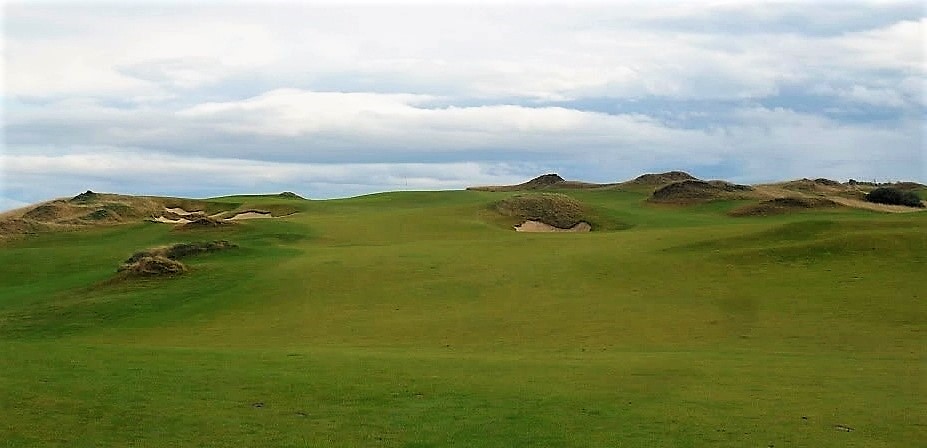
#13 is probably not as harsh as it seemed - more a case of an unfortunate hole location given the wind off the left.
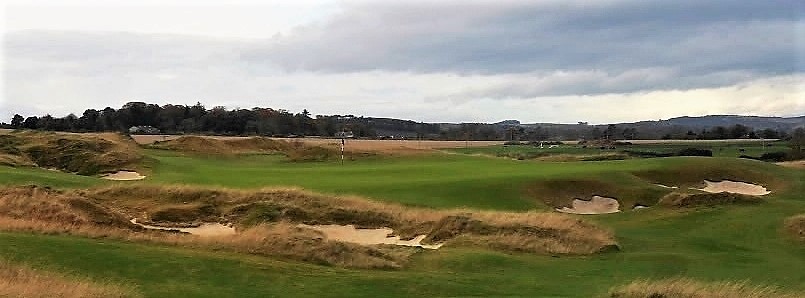
I have been talking about severe greens, but the 14th has to be in the discussion for most severe. That said, there is no way I would change an inch of the putting surface. This is an engenious hole luring golfers to the poor position on the right. The best position is down by the water where one earns a straight shot in on this long, narrow green.
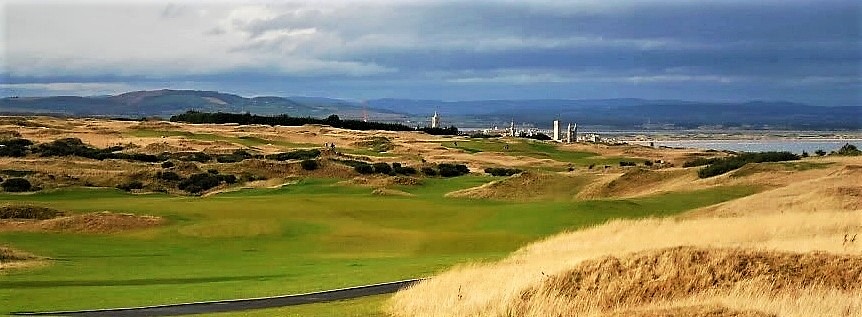
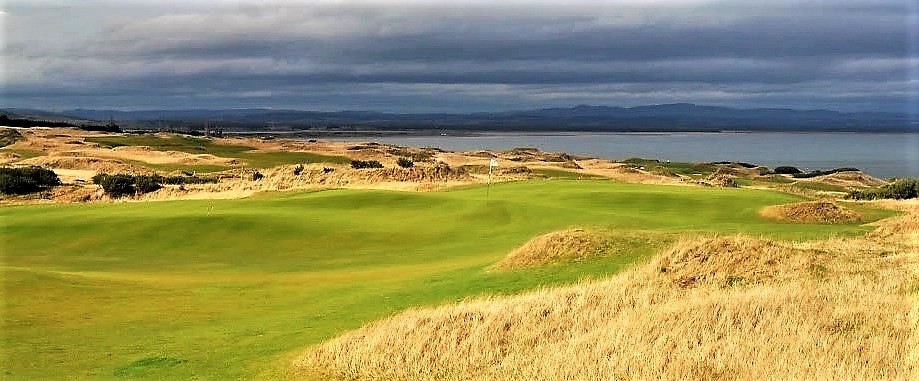
The long par 5 15th crosses a burn just shy of the green. Unlike on the fourth, most can't reach the water in two. Not surprisingly, the green is raised and quite difficult to hold. There is the possibility of bouncing a low shot over the water and have it kick it up, but I suspect one must be quite close to the burn to try this.
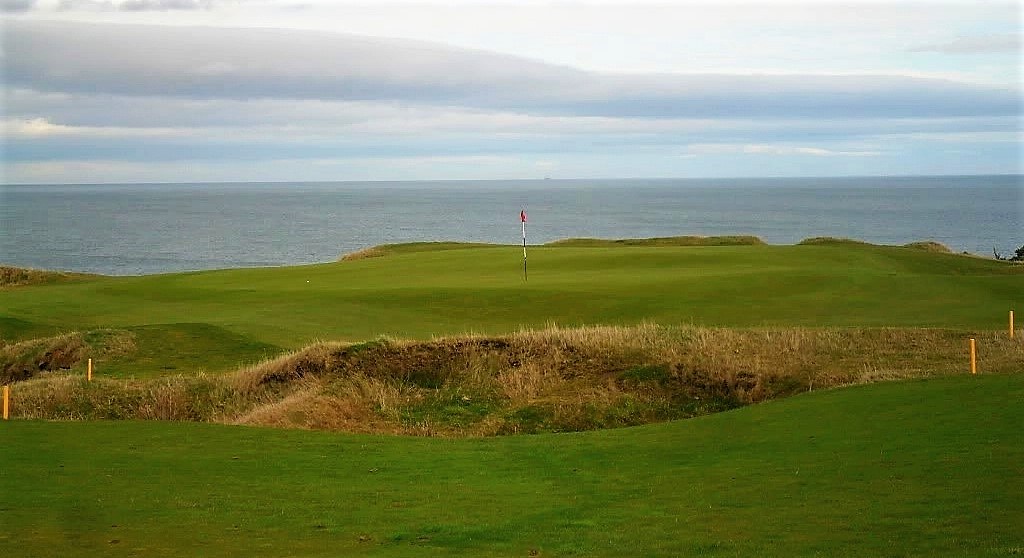
Just to make things easy to remember, the final three holes all have relentless greens - some may say cruel. The drive for number 16 is somewhat obscured and it is easy to leak it left. Because of the raised green it may be best to lay-back at a full shortish iron distance...the approach.
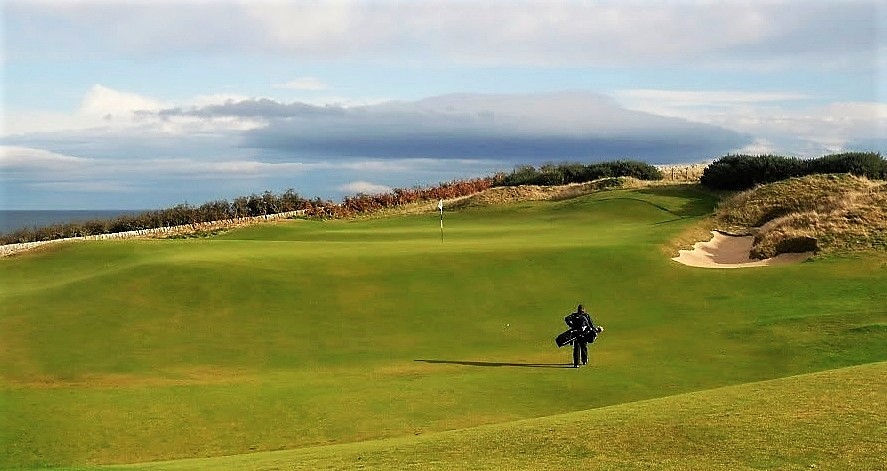
The final two holes offer all sorts of heroics - some of it forced and some of it by choice. #17! One can feed a ball in from the left, but for all the hard work involved in hitting this green, the putting surface is still very challenging.
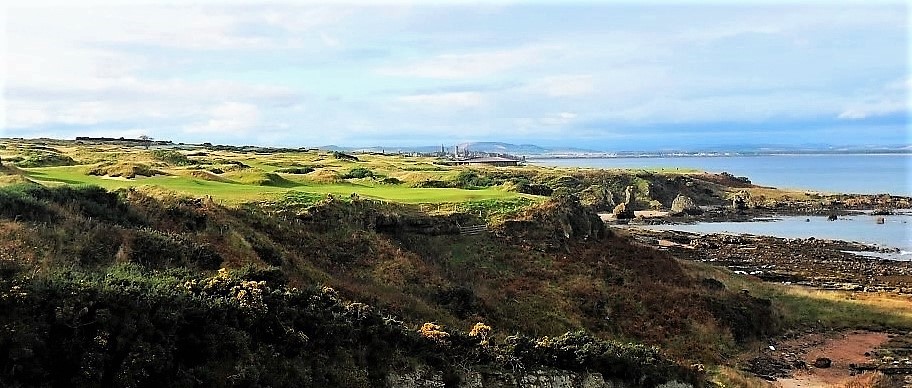
Behind the green.
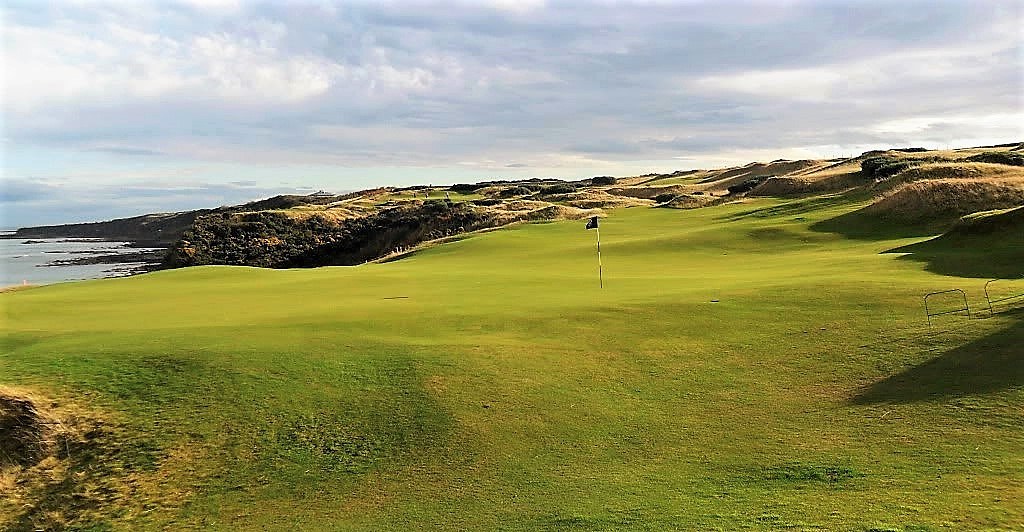
The home hole is a wonderful three-shotter. From the tee it is hard to know where one should aim. The fairway leads out to the left, but the eye is drawn to a nest of bunkers over the cliff roughly halfway between the fairway and green. Clearly, the green can be reached in two if a risk is taken, but how much risk? Even when the risky is drive is taken on the approach to the raised green is no bargain.
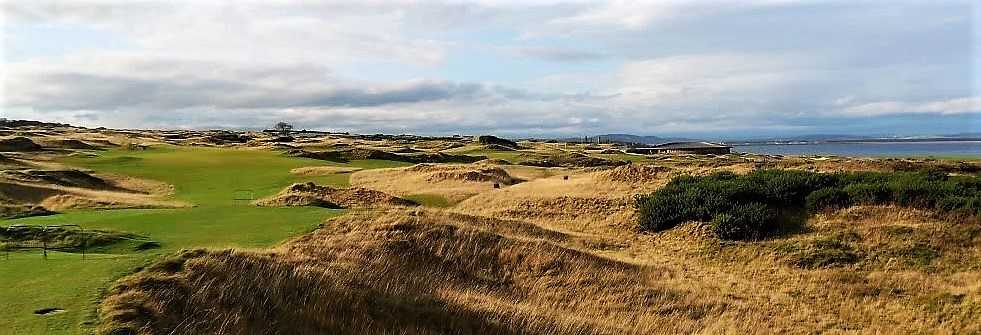

To some degree I think The Castle is a wasted opportunity, but I am not ready to throw the course under the bus just yet - there is far too much good stuff on offer to be so black and white. #s 4, 9, 10, 14, 17 & 18 are all holes which would grace nearly every course on the planet. The routing is well done with walking between holes kept to a reasonable minimum for a modern course. It would be grand if three or four greens were toned down, but I honestly think sorting out the drainage is far more important. Once that is done a fresh look at the greens can be taken with a much greater chance of getting it right.
I especially like the texture of the course. The rough lines cutting in on horizons and how fairways bleed into greens is also very attractive. Despite the many nay sayers on the Castle Course, I have some time for the place and would suggest, if folks are in town and need to fill a date, they should consider the The Castle with the warning that it is extreme. So much so, that I wouldn't have believed I would ever say I thought a set of greens were just too much, but that is without a doubt the case with The Castle.
Previous stops on the 2011-12 Winter Tour.
www.golfclubatlas.com/forum/index.php/topic,30926.0.html Kington
www.golfclubatlas.com/forum/index.php/topic,37526.0.html Harborne
www.golfclubatlas.com/forum/index.php/topic,49998.0.html Worcester G&CC
Next Up
The Old & The New
Ciao